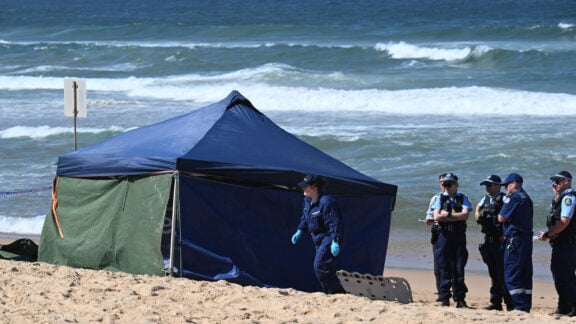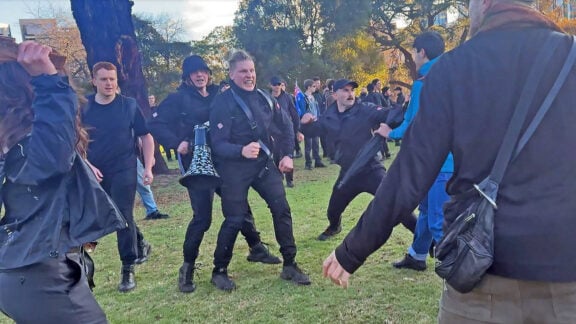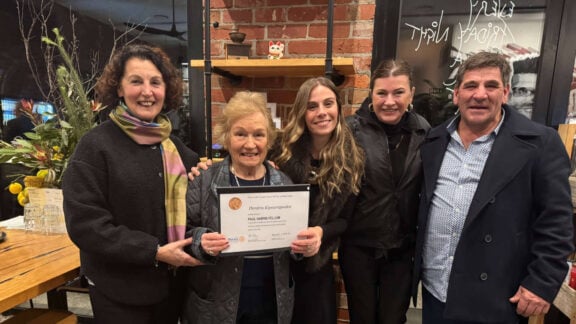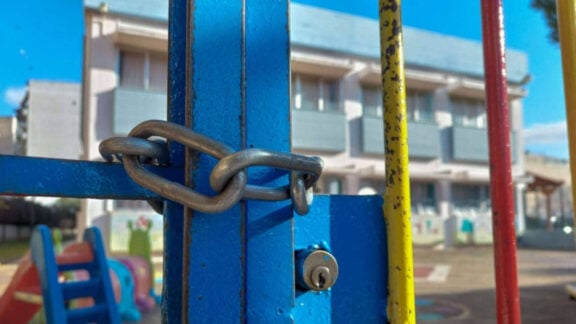We recently held a five-day Food & Photography retreat recently concluded in the picturesque island of Ikaria, bringing together a group of creative and inspiring women, including Olia Hercules, Stephanie Stamatis, and Lean Timms.
We aimed to uncover the secrets of Ikarian longevity, delving deeper into the island’s rich traditions, joyful lifestyle, and cuisine combining the art of culinary exploration with the beauty of photographic storytelling.
From the moment the attendees stepped off the plane, they could feel the unique energy and magic of Ikaria, an island renowned for its large number of centenarians who enjoy lives free of chronic diseases such as diabetes, high blood pressure, and dementia.

Over the course of five days, participants engaged in a variety of activities that showcased the island’s vibrant culture and natural beauty.
They foraged for wild herbs, cooked and savoured delicious Ikarian dishes using fresh seasonal produce, and attended workshops on food and travel styling and photography led by Lean Timms and Stephanie Stamatis.
These sessions guided attendees in crafting a set of images from start to finish, creating magical storytelling moments.

A highlight of the retreat was a visit to Afianes Winery, where participants tasted and learned about natural winemaking with local indigenous grape varieties. The group also enjoyed the lively atmosphere of a traditional paniyiri, an essential festival in Ikarian life that is built around community connections.
Much more than just nights of dancing and enjoying food; paniyiria are times of spiritual connection and celebration with family and friends, which many believe is the true essence of Ikarian longevity.
My first experience of Ikaria’s paniyiria is one that will always stay with me. The sense of joy, community, and connection here is indescribable and can only be truly experienced.

IKARIA, A BLUE ZONE PARADISE
This beautiful Greek island in the Aegean Sea is named after Icarus, the mythological figure who fell into the surrounding sea when his wax wings melted in the sun. With a population of just under 8500, it is a nature lover’s paradise surrounded by crystal blue water with lush hiking trails leading to villages nestled on the mountainous coast.
The Ikarian cuisine, like the landscape, has been preserved. It reflects the typical food patterns of Greece and Italy during the early 1960’s, but, like many of the island’s traditions and ways of life, it has not changed with contemporary times. Ikaria is a textbook example of the Mediterranean diet in its holistic sense: pure and honest food enjoyed with a community.

Today most Ikarians continue to grow their own supply of vegetables, fruit and herbs, with many having their own goats for milk to make yogurt and cheese for their household. Goats graze on the mountains of the island: lush greenery and a rocky landscape, all encompassed by the ocean. These are the things that make the difference. Wild herbs are foraged for food but are also traditionally used as remedies based on oral tradition. Sage, mint, dandelion, rosemary, pennyroyal and chamomile are harvested seasonally, dried and used in both hot and cold teas, something with a squeeze of lemon or a spoonful of the exquisite local thyme flavoured honey.
Ikarians are experienced fishermen and many families catch their own seafood. For those that don’t, they always know of a local fisherman they can get their fresh seafood from and most of us would agree that there are few things that can compare to freshly caught seafood, cooked and enjoyed with a glass of the local wine, overlooking a sea view.

The Blue Zones refer to a small number of geographical areas where people live an exceptionally long life and have significantly lower rates of chronic disease. The term came about in Dr Poulain and Dr Pes’ research; when studying these areas, they would draw blue circles around them on a map and refer to them as ‘blue zones’.
Dan Buettner helped popularise the idea of Blue Zones, first with his 2005 National Geographic cover story, ‘Secrets of Long Life’. Since then the trio have worked together to study how people live in these areas and what contributes to their longevity.
Ikaria is one of five Blue Zones, the others being Italy’s Sardinia; Okinawa in Japan, Loma Linda in California and Costa Rica’s isolated Nicoya Peninsula. Though these areas are geographically distant and diverse in their culture and faith, they share a common thread of advocating plant-based diets that include legumes, daily activity and a deep sense of community.

COOKING LIKE A LOCAL
Urania’s Soufico from the IKARIA Cookbook
Soufico is one of Ikaria’s most iconic dishes, traditionally cooked every Saturday, the day when ovens were on for the weekly baking of bread. Leftovers were used in omelettes, or sausages added as another good option.
The word soufico comes from a word in the local dialect: soufika translates to ‘I left you some’. The story told is of a woman asked by her husband What are we going to eat today?’ She goes into the garden and collects vegetables, places them in her apron and goes to the kitchen to prepare a simple dish. Once cooked she replies soufica: I left you some.

Urania describes the way her grandmother made this dish, and she tells me this is her original version. Urania’s grandmother would cut all the vegetables into chunks, frying each separately, her secret being the caramelised onions, which made the dish even more delicious. Some like to bake the vegetables instead of frying them individually, making the dish lighter and a little easier as well.

Ingredients
3 eggplants, cut into small cubes
5-6 peppers, cut into small chunks or julienned
1 ½ kilos onions, diced
2 zucchinis, sliced into rounds
3 potatoes, peeled and cut into small cubes
1 garlic clove
2 large tomatoes, grated
3 – 4 tablespoons fresh basil leaves
100 mls olive oil
1 teaspoon sugar
dried oregano
salt and pepper, to taste

Method
1. Heat 3 tablespoons of olive oil over a medium heat in a deep frypan.
2. Add the diced onion and a pinch of salt and cook on a low heat for about 10-12 minutes or until the onions are soft and a golden colour. Make sure you stir occasionally to prevent them from sticking or burning.
3. Transfer onto a plate and put aside.
4. Add the peppers to the frying pan, adding another tablespoon of olive oil if needed.
5. Cook the peppers on a medium heat until softened a little but not booked through. Continue by adding the zucchini, eggplant and potatoes one at a time, until softened and they begin to change to a golden colour.
6. Cut the tomatoes in half and, holding skin side down in the palm of your hand, grate the tomato flesh into a large bowl. Once you have grated all the tomato, add 1 teaspoon of sugar to
maximise the flavour, and a pinch of salt and the garlic clove. Allow the tomato mixture to sit for a few minutes to develop the
flavours.

7. Using a large baking dish, begin layering the prepared vegetables. Spread 1/3 of the onion mixture on the base of the baking dish and layer half the potatoes on top, followed by half the zucchini, eggplant and peppers. Ensure you are seasoning between layers as you go with some salt, pepper and dried oregano. Repeat until all the vegetables are finished.
8. Pour the tomato mixture over the top of the vegetables, covering them completely and cover the dish. If using a casserole dish, cover with the lid, or you can use foil.
9 Place into a pre-heated oven at 180 degrees C for 10 minutes. Take out and remove the garlic clove. Place back into the oven, and continue cooking for a further 20 minutes or until all the vegetables are cooked.

10. Remove from the oven and arrange the basil leaves on top. Allow to cool and serve at room temperature.







